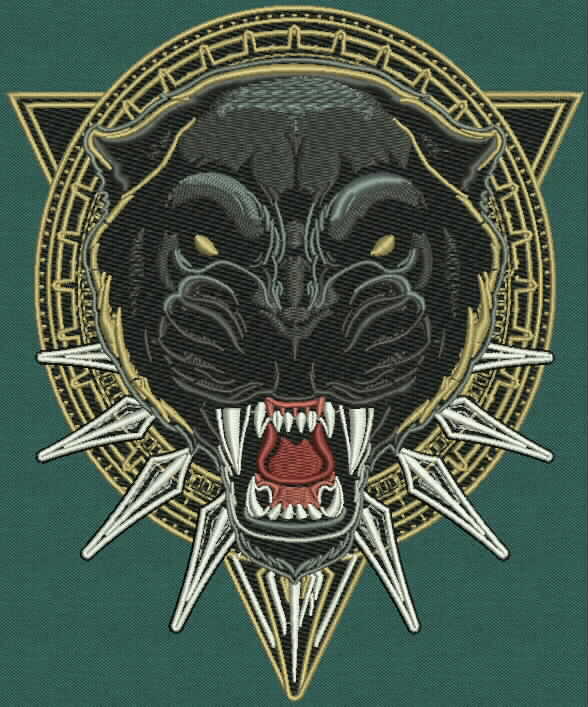Budget Friendly Digitizing for Embroidery: Accuracy and Detail
Budget Friendly Digitizing for Embroidery: Accuracy and Detail
Blog Article
Streamlining the Art of Needlework Digitizing: Step-by-Step Overview
As technology continues to breakthrough, the digitization procedure has become much more obtainable, allowing lovers to bring their complex designs to life with simplicity. In this overview, we will unwind the intricacies of needlework digitizing, damaging down each step systematically to improve the procedure and encourage both novices and skilled embroiderers alike.
Comprehending Needlework Digitizing Software Application
Embroidery digitizing software application functions as an essential tool for transforming complex designs into digital styles compatible with embroidery equipments, promoting accurate sewing and personalization. This specialized software permits customers to import various picture documents formats, such as JPG or PNG, and convert them into needlework machine-readable formats like DST, EXP, or PES - Digitizing for Embroidery. By utilizing functions like stitch editing and enhancing, underlay alternatives, and thread color option, digitizing software allows individuals to manage every aspect of the style process
In addition, progressed embroidery digitizing software supplies devices for creating complex designs, adjusting stitch density, and integrating elaborate details. Individuals can also preview the design prior to sewing it out, making certain precision and minimizing mistakes. Furthermore, several software application give automated functions that assist simplify the digitizing procedure, saving effort and time.
Comprehending the capacities of needlework digitizing software program is necessary for attaining top notch cause embroidery tasks. By understanding this tool, needlework fanatics and professionals can unleash their creative thinking and bring complex designs to life with accuracy and performance.

Selecting the Right Style Documents
After acquainting on your own with the abilities of needlework digitizing software, the next crucial action in the process is picking the best style declare your task. Digitizing for Embroidery. When choosing a design file for needlework digitizing, it's crucial to consider the intricacy of the layout, the size of the end product, and the kind of textile you will be dealing with
For elaborate designs with great information, a high-resolution photo or vector file is recommended to ensure that the embroidery equipment can precisely reproduce the design. Additionally, the size of the last product plays a considerable duty in choosing the best style documents. Larger styles might need greater resolution data to maintain clearness and sharpness.
Furthermore, the kind of textile you will certainly be stitching on affects the selection of style file. Different materials might need changes in the layout file to guarantee that the stitches are effectively lined up and the layout shows up as intended. By carefully selecting the appropriate layout documents based upon these variables, you can establish yourself up for an effective needlework digitizing procedure.
Digitizing Tools and Methods
Using specialized software and accuracy methods, digitizing devices are important in transforming elaborate styles right into embroidery-ready data. Embroidery digitizing software, such as Wilcom, Hatch, or Embrilliance, provides the essential system to transform artwork into stitch article source data. These programs supply attributes like stitch editing, padding choices, and text tools to ensure the design converts seamlessly onto fabric.
One of the vital methods in digitizing is developing a clear path for the embroidery maker to comply with. This entails digitizing each component of the design with precision, determining stitch types, densities, and instructions. By making use of tools like digitizing tablet computers or software-specific plugins, embroiderers can achieve a high degree of precision in their digitized styles.
In addition, grasping the art of underlay sewing is essential for producing top quality needlework. Underlay stitching supports the textile and produces a structure for the design, ensuring that the last item is both visually enticing and durable. By understanding these digitizing tools and strategies, embroiderers can boost their craft and bring elaborate layouts to life with accuracy and performance.
Tailoring Stitch Types and Instructions
The option of stitch types can dramatically influence the general appearance and appearance of the stitched layout. By purposefully integrating these stitch kinds, embroiderers can attain deepness and measurement in their designs.
Additionally, the direction of stitches plays a critical duty in improving the aesthetic appeal of the final embroidery. Diverse stitch directions can add texture, emphasize particular elements, and create aesthetic passion. Altering the angle of stitches can imitate movement or natural patterns like hair or feathers. By explore various stitch angles and patterns, embroiderers can bring their styles to life with impressive information click this and intricacy. Mastering the art of personalizing stitch types and directions empowers embroiderers to release their creative thinking and raise the high quality of their job.
Testing and Refining Your Digitized Design
To make certain the precision and quality of your digitized layout, extensive screening and improvement are vital actions in the embroidery digitizing procedure. As soon as you have completed the digitization of your layout, it is critical to test it before waging the real embroidery. Testing enables you to identify any potential problems such as string breaks, sew thickness issues, or style distortions that might impact the final outcome.

After screening, it is very important to improve your you can try this out digitized layout based upon the feedback from the test sew-out. This might entail tweaking stitch setups, changing thickness, or making modifications to the total layout to achieve the wanted end result. By iterating with testing and improvement, you can tweak your digitized style to excellence prior to progressing with the real needlework process.
Final Thought
Finally, mastering the art of needlework digitizing calls for a detailed understanding of the software application, choosing the appropriate style file, using digitizing devices and strategies, customizing stitch kinds and instructions, and screening and fine-tuning the digitized design. By following these steps, embroiderers can simplify the digitizing procedure and produce high-grade embroidered styles with precision and efficiency.
Report this page